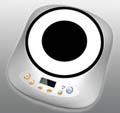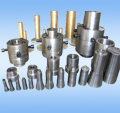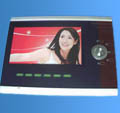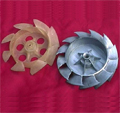

| Address: | PDS Enterprise Inc. 1650 West Artesia Blvd, Suite 278 Gardena, CA90248 |
| Phone: | 1-843-408-0142 |
| Email: | pdsenterprise@gmail.com sales@coolprototyping.com |


Home>Glossary
234. Several common comparison of rapid prototyping technology 4
The prototype laminated foil (Laminated Object Manufacturing) rapid prototyping technology is the sheet material stacking process, referred to LOM.
Foil Laminated three-dimensional CAD solid model making is based on the contour of each section, under computer control, control of laser cutting system to issue commands, so that the cutting head for the X and Y direction of the movement. Agencies will feed hot melt coated surface of the foil material (such as coated paper, coated ceramic foil, metal foil, plastic foil material) sent a paragraph above the table. Laser cutting system in accordance with the outline of the cross section of the computer extracted with carbon dioxide laser beam along the contour line on the foil paper to cut out the table contours and contour-free zone of paper cut into small pieces.
Then, the hot body and the layers of paper firmly bonded together. Can lift the workpiece table support is taking shape, and each shape, the lower thickness of a paper for feeding, bonding and cutting a new layer of paper. Finally, the formation of the block surrounded by many small waste three-dimensional prototype parts. Then remove, remove excess waste into small pieces and, ultimately, three-dimensional product.
A prototype rapid prototyping technology stack for the production of medium-sized prototype parts, less warpage, forming a short time, laser long life, made of pieces of good mechanical properties, suitable for conceptual modeling of product design and functionality test parts. And because the parts are made with wood properties, particularly suitable for direct production of sand casting mold.
LOM rapid prototyping technology advantages are:
1. Forming speed, the need to make the laser beam to cut along the outline of objects, without scanning the entire section, so the shape quickly, and thus the internal structure of simple and commonly used in the processing of large parts.
2. No need to design and build the support structure.
LOM rapid prototyping technology's weaknesses are:
1. A laser loss, and require specialized laboratory environment, expensive to maintain;
2. Can be applied to the raw type less, although the choice of certain raw materials such as paper, plastic, clay and synthetic materials, but currently used only on paper, others are still under research and development in foil;
3. Must be moisture-proof treatment, paper moisture deformation part is easy, so immediately after the resin molding, and other moisture-proof paint coating after the Department
4. Difficult to build fine shape, multi-surface components, limited to simple parts.
5. Waste removal difficult, so that the process should not build the internal structure of complex parts.
6. When the room temperature processing often have fires. Therefore, the working process requires full-time staff duties.
 We are constantly looking for new products in order to grow our business and Invention Home has enabled us to streamline that process much more quickly.
We are constantly looking for new products in order to grow our business and Invention Home has enabled us to streamline that process much more quickly. Marsha Dunmyre
CA, U.S.A
Cool Prototyping Copyright 2008-2009 © All Rights Reserved. Rapid Prototyping






